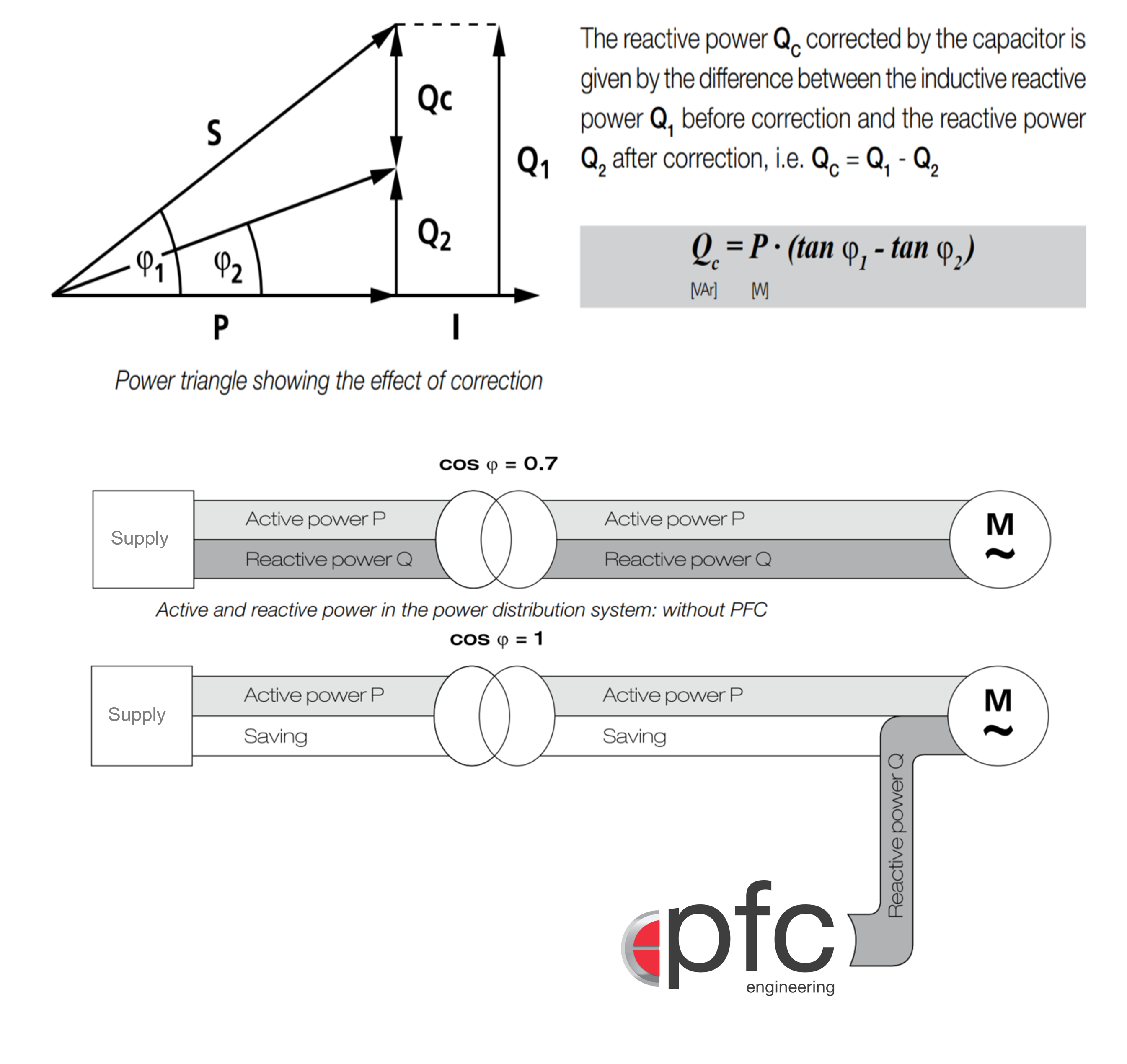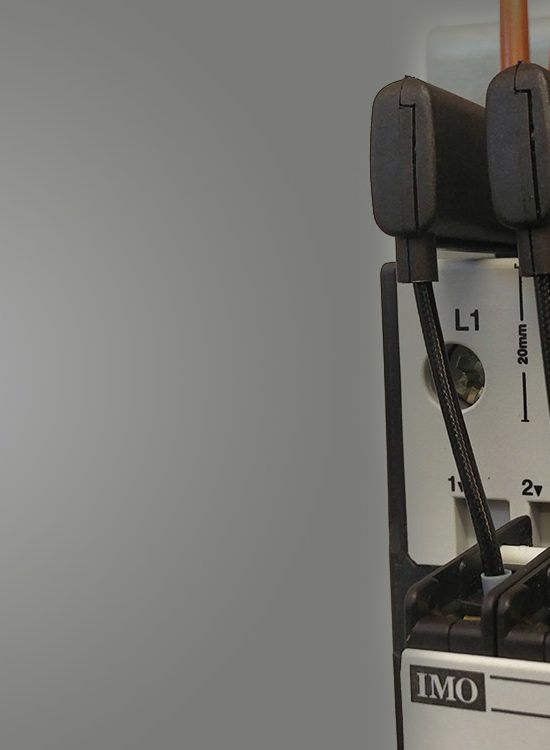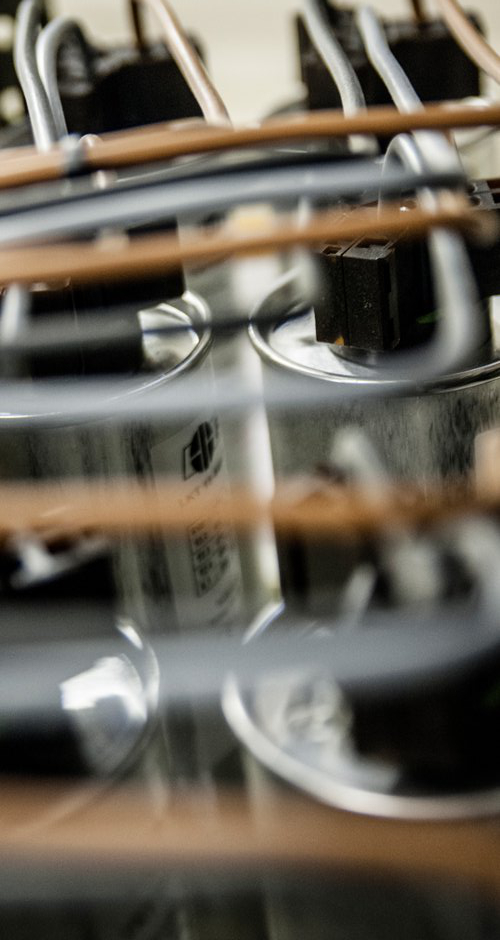Power Factor (Cos φ) is the ratio of True Power (kW) to Apparent Power (kVA) and is used as an indication of how efficiently an industrial or commercial site is operating. The closer the Power Factor is to unity (1), the more efficiently a site is said to be operating. Generally, anything higher than 0.95 is said to be a healthy Power Factor and will usually be sufficient to avoid penalty charges on the electricity bill. However, there are times where it’s essential to operate as close to unity as practically possible in order to keep the current levels to a minimum to avoid tripping breakers on overload.
The presence of Reactive Power (kVAr) on the system leads to a lower Power Factor. Equipment that requires a magnetic field in order to operate (traditional motors, chillers, induction heaters, fluorescent tubes etc) will all draw current that is said to “lag” behind the Voltage; thus producing a “lagging” Power Factor – also known as an inductive Power Factor. The more inductive Reactive Power there will be on the system, the higher the Apparent Power will be and in turn the higher the total current drawn from the network will be.
Reactive Power (kVAr) is the element that Power Factor Correction works to eliminate. The capacitors within draw current that is said to “lead” the Voltage, naturally producing a “leading” Power Factor – also known as a capacitive Power Factor. By having capacitors automatically switched into circuit in equal measure to the nominally inductive site load, the two effectively cancel each other out.
The end result is that the overall Reactive Power levels are decreased and the Power Factor is improved accordingly.
 PFC Switch ReplacementApril 16, 2024 - 11:30 am
PFC Switch ReplacementApril 16, 2024 - 11:30 am Baggage Line PFC ReplacementApril 8, 2024 - 11:30 am
Baggage Line PFC ReplacementApril 8, 2024 - 11:30 am Power Factor Assembly ReplacementMarch 28, 2024 - 11:00 am
Power Factor Assembly ReplacementMarch 28, 2024 - 11:00 am



